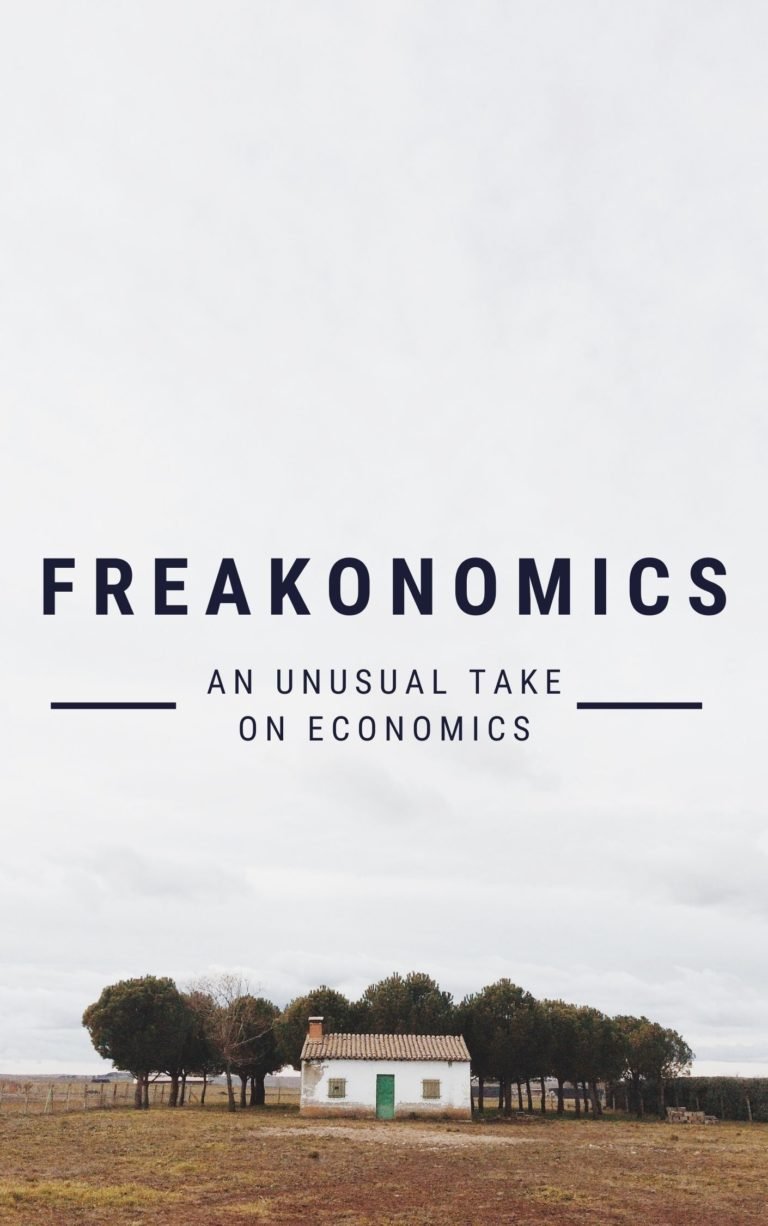The Economics of Higher Purpose
Anjan V. Thakor and Robert E. Quinn
Rating: 9.0
“Eminent scholars Quinn and Thakor offer a practical and inspiring approach toward building a purpose-driven organization that shows how to reconcile the critically important authenticity with the profit objectives of commercial enterprise.”
—Eric Van den Steen, Professor of Business Administration, Harvard Business School
Contents
Abandon the “principal-agent” myth
Employees are not naturally lazy. They seek purpose. Don’t micromanage them, inspire them.
Classic economics argue that people act in their own self-interest and exert the least effort possible for the most gain – that is the principal-agent problem. Under this philosophy, managers must watch, prod, reward and punish workers. This managerial approach, which has prevailed for decades if not centuries, creates exactly what its managers expect: disengaged, unenergized workers who need constant micromanagement. But when organizations adopt and maintain an authentic purpose – one that guides all their decisions – employees embrace the organizational purpose as their own. A shared purpose ignites camaraderie and collaboration, improving performance and then profits.
Authentic purpose can never speak directly to financial goals. Improved financial performance emerges from higher purpose. Higher purpose doesn’t mean corporate charity. Your firm needn’t sacrifice its business goals to do good. Instead, link your company’s purpose to its strategy, objectives and business success.
True purpose guides few organizations. Making true purpose your compass opens up your opportunity to take competitive advantage. Purpose attracts and retains the most talented people and engages them to achieve higher performance.
“Unless the higher purpose becomes the arbiter of every strategy and leadership decision, the organization has no higher purpose.”
Higher purpose transforms people and organizations. In people, it changes the dynamic from reactive to proactive, from passive to active leadership. It moves people away from the drudgery of working for money, promotions and extrinsic rewards to the inspiration of working toward pro-social goals larger than themselves or the firm.
Organizations with higher purpose bring employees together to strive toward common objectives. Internal politics and gamesmanship decrease as employees come to trust one another more. Engagement in the work and commitment to the firm increase as a sense of meaning and shared purpose spreads among leaders and the workforce. But purpose doesn’t solve everything. Organizations must perform at a high level in execution, planning and financial management, among other business functions. Purpose has to align with good business sense: You must make a profit to propel the purpose.
Leaders – CEOs, especially – most often come to their jobs after successful careers navigating and enforcing conventional managerial practices based on hierarchy, rewards and punishments, internal competition and an emphasis on tangible outcomes. To succeed as a CEO, you must reach new levels. Conventional practices still matter, but to inspire a collaborative, innovative company, add authentic, shared purpose. Effective CEOs promote trust, inclusion and a sense of mission. They include everyone. They listen, and they believe that people will strive for goals beyond money, putting aside competition for resources and promotions to cooperate and co-create.
When leaders act in their own self-interests – for example, by doing whatever it takes to drive stock values higher – and when they expect employees to act in their self-interests, selfishness becomes the culture. Social unity evaporates. When you regard employees as self-interested agents, you tend to use carrots – extrinsic incentives like bonuses and other rewards – as motivation. Such superficial engagement requires constant feeding, and shatters as soon as a tough decision presents itself – like cutting costs or downsizing.
Instead, purpose-driven leaders transcend the transactional mind-set by building a covenant with the workforce based on trust, not self-interest. Shared pro-social goals enhance motivation that comes from pay, extrinsic rewards and incentives, bonuses and profits. Incentives work well, so use them thoughtfully with the goal of awakening your employees’ intrinsic motivation.
Purpose leads to profit; profit enables purpose
Your purpose must intersect with business goals – one supports the other – and it must be authentic. Employees know that leaders may fake commitment to a purpose to buy goodwill and extra effort. Wise, honest leaders convince employees by making decisions through the filter of the organization’s purpose, by communicating it constantly, by making personal sacrifices and by sacrificing lucrative opportunities that run counter to the purpose. Once convinced, employees lower their guard, take risks, collaborate and work harder. They believe their work contributes to something greater – a larger societal purpose.
“One way to restore faith in the system is for corporations to adopt authentic prosocial higher purposes, without government coaxing or societal pressure. If firms fail to do so, the consequences will be dire.”
A greater prevalence of purpose-driven firms could restore faith in capitalism. Organizations with purpose weather crises more ably, as people with purpose more readily overcome hard times. Purpose builds resilience. Ensure that you discover a true higher purpose, one you believe in and can fully commit to. Without your constant, relentless and visible commitment, the purpose will not convince others, nor take hold. You may face challenges from other leaders and/or your board of directors. You may have deadline challenges and competing priorities, or face a battle against the current culture. Find one example of a purpose-driven, excellent individual performer, leader or team. Use that example to propel the rest of the organization forward.
To create an authentic, purpose-driven organization, take eight steps
To build a company and a corporate culture based on authentic purpose, pursue eight goals:
1. Put forth a vision of a company with purpose as its engine.
“Envision the purpose-driven organization.” Gather leaders from across your firm. Ask them to list words or phrases that describe a workplace and culture they would aspire to, including words and phrases that describe the company at its current best. Have each person write a paragraph describing a vision of the firm operating at full potential. This helps leaders envision a purpose-driven firm. It also helps them see past the conventional work-for-reward contract to a workplace in which people benefit through shared purpose, mutual respect, better communications, increased trust and greater collaboration.
2. Find that purpose.
Look deeply into your firm to discover its purpose. You can’t simply state a nice-sounding purpose from above. Your purpose must reflect the organization and resonate with the workforce. Employees should discover their personal purposes. With personal purpose, people gain confidence and open up to challenge. They feel the power and certainty they need to take chances and pursue the hard options – not only the easy tasks.
3. Give your people the authenticity they need.
Authenticity means more than telling the truth. Authenticity requires integrity at the factual and emotional levels. It demands vulnerability and honesty. Regrettably, most leaders regard their colleagues and workers as self-interested and political. In response, people act and speak through the armor of correctness, letting diversity of thought and ideas fall by the wayside. Authentic meaning and purpose lower people’s shields and deflate political infighting. They permit stronger relationships and discussions and create a positive aura, making the firm attractive to top talent.
“Having an authentic purpose and culture differentiates a firm and makes it attractive to those who deal with it.“
When Sandler O’Neill, a Wall Street financial firm, lost one-third of its employees in the September 11, 2001 terrorist attacks, CEO Jimmy Dunne felt impelled by purpose. He or another senior leader attended every funeral. Despite the financial strain on the firm, the company paid the victims’ full salaries to their families for the next 10 years. Dunne insists that authentic purpose must permeate everything he does. To preserve it, he will go against what he might like to say or do, even regarding small matters, because doing otherwise might put a crack in the authenticity of the purpose and therefore of the firm’s culture. Bring your people together to read cases like Dunne’s. Have them discuss their experiences with – or their definition of – authentic purpose. Brainstorm steps your firm can take to achieve it.
4. Base all decisions on that higher purpose.
Finding your authentic higher purpose is half the battle. Now, constantly and relentlessly communicate it – way beyond the point at which you’re certain it has sunk into the mind of every employee. Use it as your “constant arbiter” in decision making. A large aspect of that communication derives from how you live the purpose, and how you exhibit it in everything you do. Your authentic purpose must inform every decision. When it comes to making “hard choices” – especially those that could earn your firm potential benefits – then the purpose must act as a filter through which the decision comes.
“In a purpose-driven, positive organization, people have high-quality relationships because it is safe to communicate who they really are.”
In most organizations, employees have to see these tough decisions, time and again, to believe in and trust leaders’ commitment to the purpose. When this happens, people internalize the purpose, rally around it and use it to guide their decisions. Therein lies the power – engaged employees who give extra effort and do the right things when no leader is watching. Have your people discuss the application of purpose as the final arbiter of all decisions.
5. Spur continual learning.
Employees want to keep learning and growing. Organizations succeed when they consistently invest in their people. Instill a growth mind-set throughout your organization. People with a growth mind-set naturally believe they and their teams can learn and do anything. Those with a fixed mind-set believe in innate intelligence and skills – you’re either smart, or you’re not. Encourage growth and a growth mind-set. Build learning into your purpose to give employees the tools they need to put the purpose into operation and execute it.
6. Enable middle managers to lead based on their sense of purpose.
To build a purpose-driven organization, “turn midlevel managers into purpose-driven leaders.” Recruit and hire people who can articulate a personal purpose and explain how it guides their decisions. Promote people who have shown an ability to inspire and infuse purpose in others.
“By organizational higher purpose, we mean a prosocial goal that transcends the usual pursuit of business goals but intersects with those goals.”
Purpose attracts. It draws the right employees and connects customers at an emotional level. To engage your midlevel managers, bring them together. Ask about their feelings toward your firm and its people: Do they consider it a second family? Why? Why not? Ask them to describe purpose-driven leaders they’ve known, and what made them so. Ask for their support, and ask what they need from you to join the effort.
7. “Connect the people to the purpose.”
Beyond midlevel leaders, convince the rest of the organization to embrace the purpose. Connect to them through their feelings and goals. KPMG asked employees to create 10,000 posters expressing what they do and how they make an impact. In June, the company told employees that if they hit the goal by Thanksgiving, they would earn two extra vacation days at Christmas. KPMG employees created 42,000 posters. Focusing employees on their purpose inspired higher engagement scores and markedly reduced turnover.
8. Empower the leaders and teams who embody positive purpose.
Every firm has purpose-driven people, leaders or teams. Find them, bring them together and ask what the organization should look like in the future and how they can help lead it there.
“Managers often make well-justified, negative assumptions about employees and then design systems that end up bringing forth the assumed negative behaviors.”
Empower positive, purpose-driven volunteers to fan out across the organization, helping others see the potential of the vision.
Purpose at work comes naturally when you nourish it
Most people want to contribute to society. Most people spend at least half of their waking hours at work. Their jobs should contribute significantly to satisfying their need for purpose. If you nourish that purpose, you’ll enrich their lives – and your firm and your community will reap the rewards.






